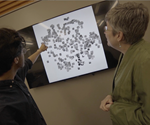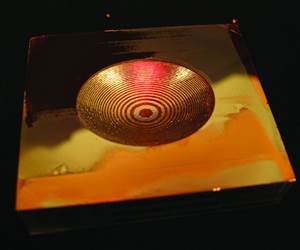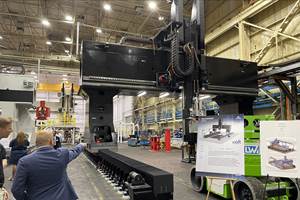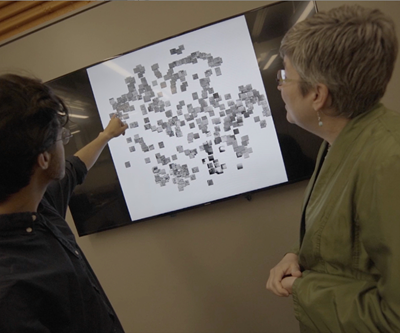Real-Time, High-Res Monitoring of Structural Defects in Metal AM
A team at Argonne National Laboratory has, for the first time, captured below-surface measurements of laser-metal reactions.
One of the challenges and one of the significant areas of unknown that is slowing the advance of metal additive manufacturing relates to understanding and controlling the formation of the metal and the microstructure that results.
But imagine if you had a front-row seat to see these thermal dynamics at play, in real time. What if you could peer inside metal and alloy powder beds at a microscopic level during a laser powder-bed fusion process, just as the laser makes contact, and witness how it melts and shapes the powder—not just at the surface, but below the melt pool? And what if you could use those observations to quantify the formation of defects with unprecedented resolution?
Enter the U.S. Department of Energy’s Argonne National Laboratory, which, with assistance from Carnegie Mellon University and Missouri University of Science and Technology, has accomplished precisely that. Using a synchrotron beamline—one of only three in the entire world—a team was able to record the laser-metal interaction with a high-speed X-ray instrument located at the Advanced Photon Source, a DOE Office of Science user facility located at Argonne. The resulting video resolution, captured at an astounding 50,000 frames per second, allows the scientists to study the formation of a given material’s microstructure—including pores and other defects—frame by meticulous frame.
Dr. Tao Sun, lead author of the published research about the work and a physicist with the imaging group in the X-ray science division at Argonne, says that without this kind of granular understanding, we’ll never be able to realize metal AM’s full potential. “The quantitative sample structure information we can obtain from these experiments is helping us better understand the physics underpinning the formation of different defects,” he says, “and also helping build high-fidelity models to guide the process optimization for manufacturing parts with different geometries and dimensions.”
In Figures 1 and 2 above, you can see the dramatic differences that resulted from adjustments to the laser power conditions during Argonne’s experiments. Both image series were taken with the same frame rate, as well as the same exposure time: 350 nanoseconds per individual image. In Figure 1, the laser power was set at 340 watts, while in Figure 2 the power was increased to 520 watts. As outlined in the research, the differences are immediate and drastic. Using 520 watts of power, “the laser-metal interaction is much more violent than the previous case. The Ti-6Al-4V powders and base are quickly melted locally. The continuous laser heating causes large cavity depth and strong oscillation behavior, and the molten metal spreads outwards from the surface with a portion getting ejected away.” For the first time ever, the team was able to directly observe and experimentally measure pore formation at the bottom of a melt pool, deep inside the base.
Other direct observations from the research include “strong metal vapor evaporation around the laser beam,” which result in melt ejections greater than when the laser power is set to 340 watts. The team believes that its findings and the processes behind them—which they plan to share with other researchers interested in building prediction models for 3D-printed materials—open the doors not only to new dimensions of research and development in additive manufacturing, but also other laser processing and traditional manufacturing techniques, such as welding. Only through a precise ability to measure and control the mechanical properties of additively manufactured products will the technology truly flourish, Sun says. “Given that the precise control of the microstructure and dimension of parts is the major barrier that hinders laser AM techniques from reaching their full potential, the experiment tool we developed and its utilization by other scientists could potentially accelerate the coming of the AM age.”
Related Content
AM 101: What Is Hot Isostatic Pressing (HIP)? (Includes Video)
Hot isostatic pressing has long been used for metal castings, but is now being applied as a valuable method for closing porosity in metal 3D printed parts.
Read MoreAM 101: What is Ultrasonic Additive Manufacturing?
Going from additive to subtractive can be simple with Ultrasonic Additive Manufacturing (UAM). What is it and how does it work? Learn the basics in this 101 post.
Read MoreWorld’s Largest Metal 3D Printer Seen at Ingersoll Grand Opening Event
Maker of large additive and subtractive machines adds capacity in Rockford, Illinois.
Read MoreAluminum Gets Its Own Additive Manufacturing Process
Alloy Enterprises’ selective diffusion bonding process is specifically designed for high throughput production of aluminum parts, enabling additive manufacturing to compete with casting.
Read MoreRead Next
A Public-Private Partnership Aims to Save Additive from Itself
Overwhelming process variables for metal additive manufacturing processes are derailing AM’s adoption for critical parts in aerospace. Colorado’s ADAPT Center—and its growing cache of data—is seeking common ground.
Read MoreComputer Vision System Automates Characterization of Metal Powder
A computer vision system that has learned to classify metal powders could speed material qualification and advance machine learning in additive manufacturing.
Read MoreVideo: Intelligent Layering Metal 3D Printing at 3DEO
Contract manufacturer 3DEO delivers metal parts using Intelligent Layering, a binder jetting-like 3D printing process the company developed and operates internally. Here’s how it works.
Read More








.png;maxWidth=300;quality=90)














